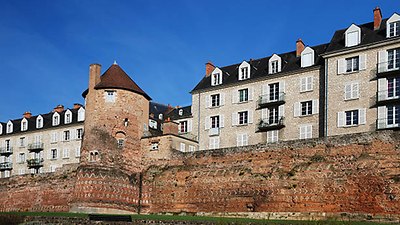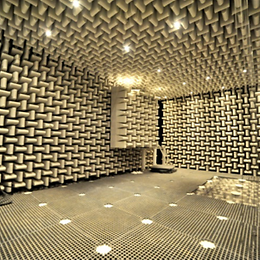

Le Mans

Le Mans – an ancient Roman city
Le Mans is the capital of the department of Sarthe in the region of Pays de la Loire in north-western France. The city is in the former province of Maine south-west of Chartres, about two hours’ drive from Paris. Le Mans was the capital of the ancient Gallic tribal region of the Cenomani, from whom the city’s name is derived. In the late 3rd century AD, the Gallo-Romans surrounded the city with powerful walls, parts of which are still preserved.
The old town with its narrow, cobbled laneways and historical buildings within the ancient Gallo-Roman walls on the left bank of the river Sarthe stands in marked contrast to the modern city that has grown around it.

Cathedral of Saint-Julien, Le Mans, Franc.
Le Mans (France) and Paderborn (Germany) were the first two cities in Europe to partner with each other as early as 836 AD.
The cathedral of Le Mans (Cathédrale St-Julien du Mans) is a Catholic church in the old town. It is dedicated to St. Julian, the city’s first bishop, who Christianised the region in the early 4th century AD. The building dates back to the 6th–14th century and features many elements of French Gothic architecture.
Europe’s oldest known city partnership dates back as far as 836 AD, when Paderborn and Le Mans established a formal link originally described as a “union of eternal brotherhood” between the dioceses of the cities’ two Catholic bishops. An official partner city agreement was signed in 1967.
CLAAS Tractor and CLAAS Industrietechnik Paderborn are continuing this strong tradition: The two companies have been partners in developing the infinitely variable EQ transmission and the TERRA TRAC crawler tracks since 2012.
Le Mans today
Until the middle of the 19th century, Le Mans was mainly a market town for agricultural produce from the region. Slowly, new industries started to emerge, mainly in the manufacture of railways, cars, agricultural machinery, textiles and tobacco, and continued to flourish for many decades.
Over time, some of these industries came to grow more strongly, above all the automotive, automotive components and food processing industries. Recently, plastics and electronics companies have added diversity, and the city has a university and a growing services sector focusing on the insurance industry.
Today, CLAAS Tractor is one of the best-known companies in Le Mans and one of the city’s largest employers.

“Poulet de Loué” and “Rillettes du Mans” from regional breeds of pigs and chickens…

... are among the most sought-after local specialties.

University of Le Mans: anechoic chamber in the acoustics lab.
The 24 Hours of Le Mans: synonymous with endurance
The first car race in Le Mans was organised by the Automobile Club de L’Ouest in 1923. That race was an endurance test which had its origins in the national French passion for cars. It followed a 10.7-mile-long racetrack called Cirque de Sarthe (after the river Sarthe), which was created in the streets of Le Mans. Over time, the race even came to inspire some world-renowned movies.
These days, the 24 Hours of Le Mans race is held in mid-June every year. The modern race – probably the world’s most famous car race – follows a road circuit along the Sarthe just a little outside of the city. An automotive history museum is close by.

1923: 33 cars at the starting line

1952: Mercedes 300 SL in second place

1964: Ford GT 40 with Phil Hill and Bruce McLaren

1976: Winners Jacky Ickx and Gijs van Lennep in a Porsche 936

Today: endurance and passion...

... supported by the CLAAS team in Le Mans






